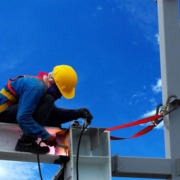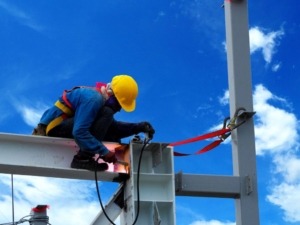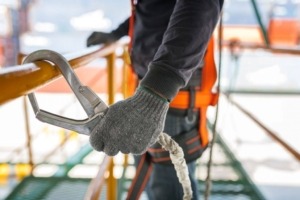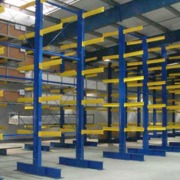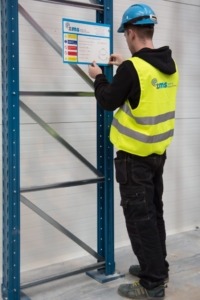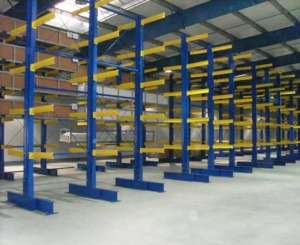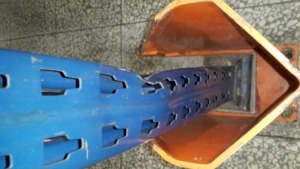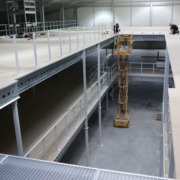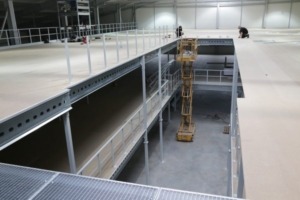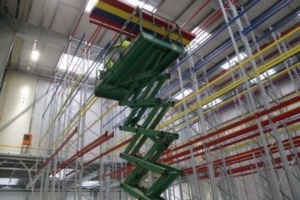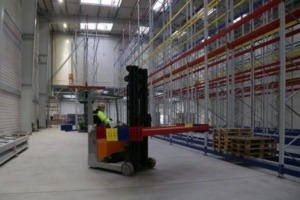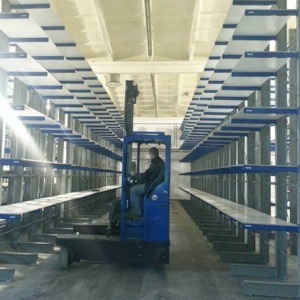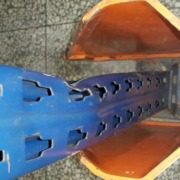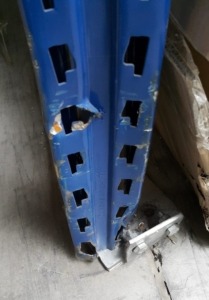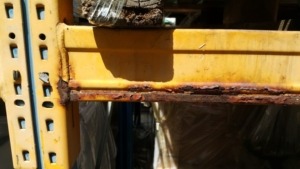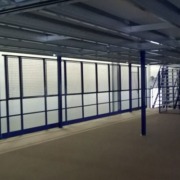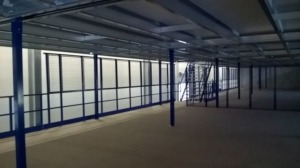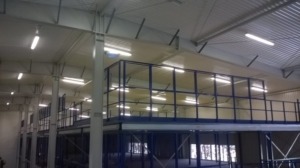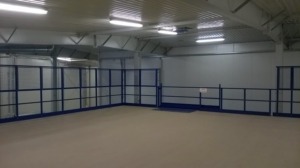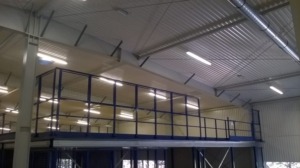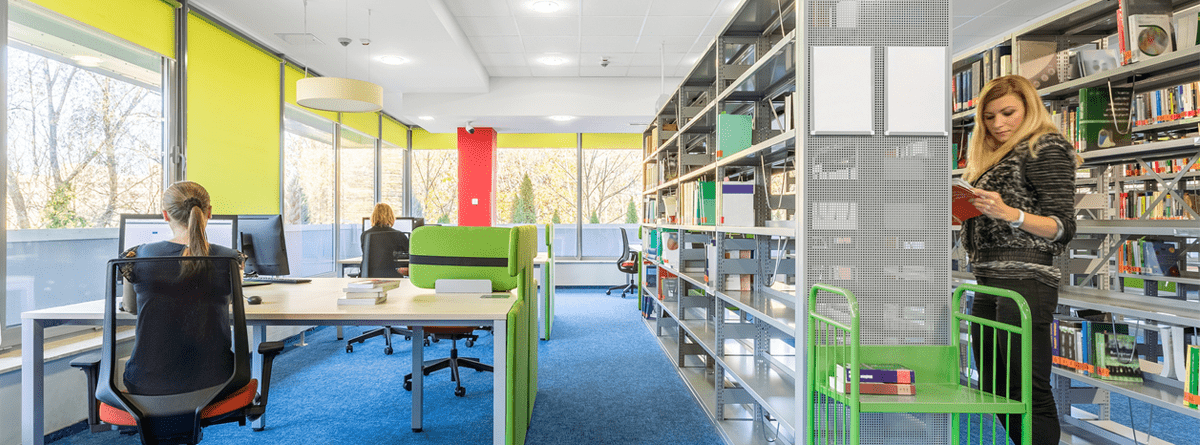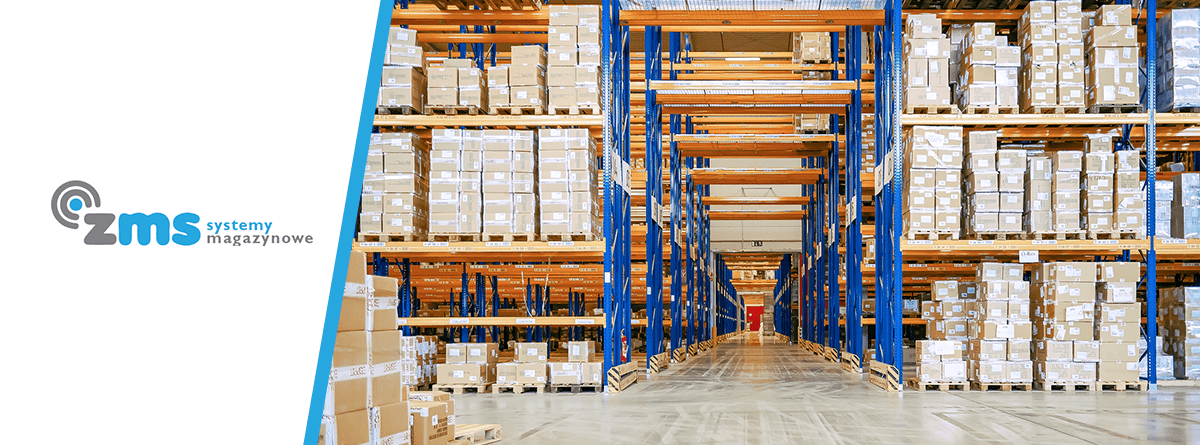Work at height– HSE Requirements
I. Work at height – Definition
Work at a height relates to the work done on the surface at the height of at least 1.0 m above the floor or ground..
Work at height does not include any work delivered on the surface, regardless of the height, if this surface:
– Is covered from all sides to a height of at least 1.5m with full walls or walls with frames,
– Is equipped with other fixed structures or devices to protect the worker against fall from a height.
Work at height should be organized and performed in a manner that prevents swinging outside the balustrade railing or outline of the device on which employee stands. On surfaces built to a height of 1.0m above the floor or above the ground, where due to their nature works may be delivered by employees, or as a transition, the railing should be installed consisting of protective rails at least 1.1m high and curbs at least 0.15m high. The midrail shall be placed between the handrail and curb, or this space should be filled in a way that prevents falling. If due to the type and conditions of the execution of the work at the height, the use of railings, referred to above is not possible, other effective measures shall be provided for the protection of workers against falls from a height, suitable for the type of delivered work.
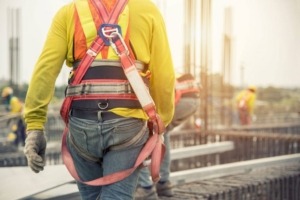
II. QUALIFICATIONS REQUIRED TO DELIVER WORK AT HEIGHT
Work at height shall be delivered exclusively by employees:
– Who hold a medical certificate confirming absence of contradictions to work at height. A referral regarding medical examination shall include annotations specifying work at height, namely 3m above the ground or less.
– Trained in the field of occupational safety that completed job specific safety training to familiarize them with the nature of work and possible hazards at the given workplace.
– Provided with personal protection equipment and familiarized with operation thereof.
To provide safety appropriate organizational measures may be provided or physical measures, e.g..:
– Fall protection system including assistance of other employee,
– Barriers, guards,
– Equipment protecting against fall from a height,
– Signage and site access security.
– Familiarizing with risk assessment analysis related to delivered work.
– Familiarizing with instructions and procedures applicable at workplace.
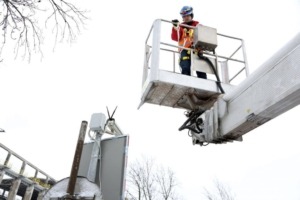
III. WORK AT HEIGHT AS SEVEREALY HAZARDOUS WORK.
As work at height is classified particularly hazardous, the employer is obliged to ensure safety during work delivery. In this regard the employer is obliged inter alia to:
– Designate a person supervising delivered works;
– Provide suitable personal protection equipment and collective protection measures; – Provide employees with job specific safety training.
- Work delivered on scaffold and mobile access platforms
Scaffold and mobile access platforms shall be delivered according to manufacturer’s documentation or individual design. Scaffold shall be erected on stable and level ground, with gradient allowing flow of storm water runoff effluent. Quantity and location of anchoring and anchoring force shall be specified in the design or manufacturer documentation. Scaffold and mobile access platform shall be provided with the plate specifying the following:
- a) Data of contractor erecting the scaffold or mobile access platform, including his name and surname, or Company name and phone;
- b) Permitted load capacity of catwalks and scaffold or mobile access platform structure.
Scaffold and mobile access platforms shall:
- a) Be provided with catwalks of working area sufficient to quantity of personnel delivering works and store tools and materials required for works;
- b) Feature with stable construction to transfer load;
- c) Be provided with the top rail and vertical circulation.
Assembly, operation and dismantling of scaffold and mobile access platforms is not allowed:
- a) At night, unless lighting is provided that ensures good visibility;
- b) During dense fog, rainfall, snowfall and icing;
- c) During storm or wind speed over 10 m/sec.
Scaffold operation and use may follow, if acceptance inspection has been carried out by site manager or other authorized person. Acceptance of scaffolding shall be confirmed with records in site log or pre-operational inspection report. Scaffold and mobile access platform shall undergo regular checks performed by site manager or other authorized person following strong wind, precipitation, downtime over 10 days, and on regular basis at least once a month. The scope of activities performed in terms of check was specified in manufacturer’s manual or design.
Works related to assembly and dismantling of scaffold and mobile access platform shall be delivered by qualified persons only.
- Portable ladders
During use and operation of portable ladders it is not allowed to:
- a) Use any damaged ladder;
- b) Use a double sided ladder as a straight ladder;
- c) Position a straight ladder against slippery surface, light or movable objects or piles of materials that do not guarantee required stability;
- d) Position a ladder in front of closed door, unless locked with a key from the side of positioned ladder;
- e) Position a ladder on unstable ground and in vicinity of machinery and other devices in manner that poses risk for employees working on ladder;
- f) Carry a ladder over 4m long by one person;
A straight ladder shall protrude 1m over the surface where it is leading to, and angle shall be 75°.
Every time adhere to the following rules regarding use of ladder:
- a) Works related to painting may be delivered on a double sided ladder only up to height of 4 m from the floor;
- b) Ladder without brackets that is over 4m long, shall before carrying or assembly be provided with a vertical guide to allow installation of automatic restraint device connected to safety rope of harness;
- c) During works on rope ladders persons shall be protected against fall from a height with the vertical guide, installed independently of load carrying ropes;
- d) Delivery of works related to plastering and masonry on a straight ladder is not allowed;
- e) Works on ladders related to rough carpentry may be delivered up to height of 3m.
- Fixing brackets and other devices
During works on fixing brackets and other devices not purposed for presence of people, delivered at height up to 2m over the floor or ground, if delivery of works require swinging outside the balustrade railing or outline of the device on which a person stands, or adopting another forced posture that poses risk of fall from a height, the following protective measures shall be provided:
- a) Fixing brackets, catwalks and other stable devices with protection against accidental displacement, and of sufficient load capacity;
- b) Access walkway that meets the following requirements:
- c) Working area sufficient to quantity of personnel delivering works and to store tools and materials required for works,
- d) Floor shall be level, and permanently fixed to the structural elements of walkway,
- e) Information shall be provided in visible manner on walkway regarding permitted load capacity.
- Works related to poles, posts, towers, chimneys, civil engineering structures without structural floors
If nature of delivered works require swinging outside the balustrade railing or outline of the device on which a person stands, or adopting another forced posture that poses risk of fall from a height, it is required in particular to:
Before work commencement:
– Check the condition of the structure or equipment on which works are to be carried out, including their stability, load capacity;
– Protection against accidental displacement;
– Condition of the fixed structures or devices designed to be used for the attachment of lifelines.
Employees delivering work:
– Shall be provided with equipment appropriate to the type of work performed that protects against fall from a height, namely: a safety harness with a lanyard attached to the solid parts of the structure, the safety harness with a lap belt (for works delivered on poles, masts, etc.), safety helmets.
Legal basis:
The Regulation of the Labour and Social Policy Minister as of 26 September 1997 on general provisions for safety and hygiene at work. Consolidated text: JoL from 2003. No. 169, item 1650 as amended.
Prepared by:
HSE Specialist
Tomasz Leliński

